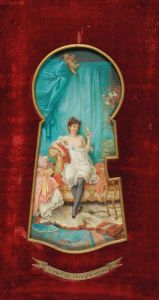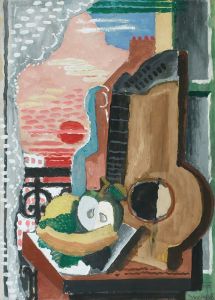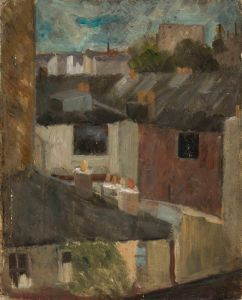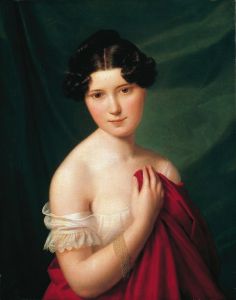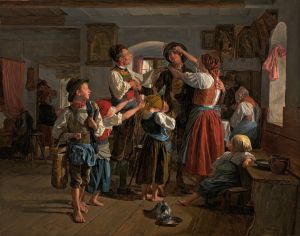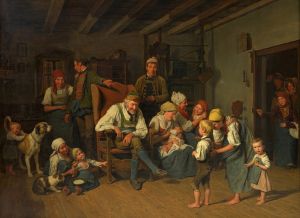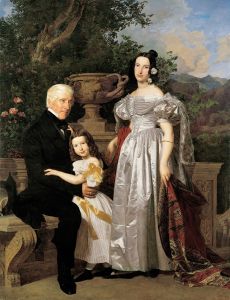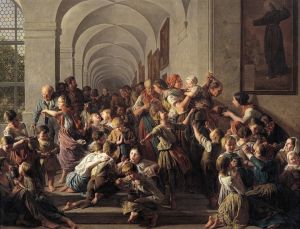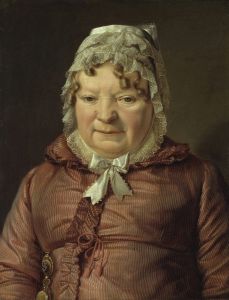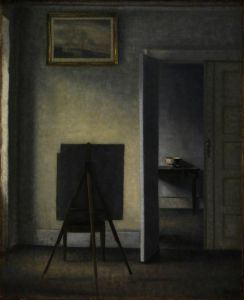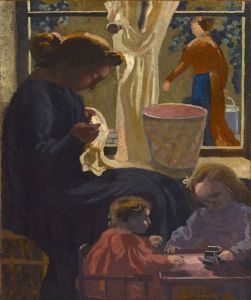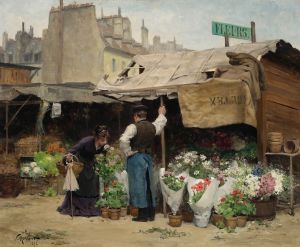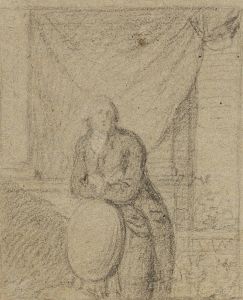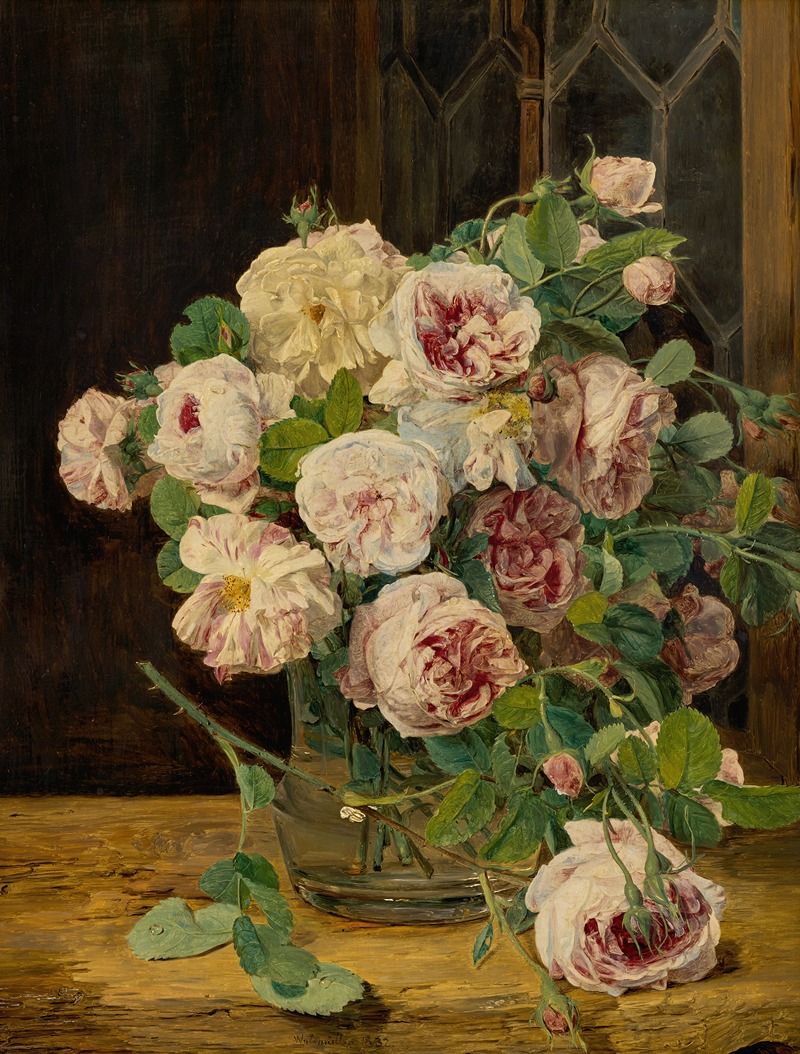
Rosenstrauß am Fenster
A hand-painted replica of Ferdinand Georg Waldmüller’s masterpiece Rosenstrauß am Fenster, meticulously crafted by professional artists to capture the true essence of the original. Each piece is created with museum-quality canvas and rare mineral pigments, carefully painted by experienced artists with delicate brushstrokes and rich, layered colors to perfectly recreate the texture of the original artwork. Unlike machine-printed reproductions, this hand-painted version brings the painting to life, infused with the artist’s emotions and skill in every stroke. Whether for personal collection or home decoration, it instantly elevates the artistic atmosphere of any space.
Ferdinand Georg Waldmüller was an Austrian painter known for his contribution to the Biedermeier period, a time in the early 19th century characterized by a focus on domesticity and middle-class sensibilities. One of his notable works is "Rosenstrauß am Fenster," which translates to "Bouquet of Roses at the Window." This painting exemplifies Waldmüller's skill in capturing the delicate interplay of light and texture, a hallmark of his artistic style.
"Rosenstrauß am Fenster" is a still life painting that depicts a bouquet of roses placed on a windowsill. The composition is simple yet elegant, focusing on the natural beauty of the flowers and the gentle light filtering through the window. Waldmüller’s attention to detail is evident in the meticulous rendering of the petals and leaves, which are painted with a lifelike precision that brings the flowers to life. The use of light in the painting is particularly noteworthy; it highlights the translucency of the petals and creates a serene atmosphere that invites the viewer to appreciate the quiet beauty of the scene.
Waldmüller was renowned for his ability to capture the subtleties of light and shadow, and "Rosenstrauß am Fenster" is a testament to this skill. The way the light interacts with the roses and the surrounding environment adds depth and dimension to the painting, making it more than just a simple still life. The window serves as a framing device, drawing the viewer’s eye to the bouquet while also suggesting a connection between the interior space and the world outside.
The painting reflects the Biedermeier aesthetic, which emphasized clarity, simplicity, and a focus on everyday subjects. During this period, there was a shift away from the grand historical and mythological themes that dominated earlier art movements, towards more intimate and personal subjects. Waldmüller’s work is a prime example of this trend, as he often depicted scenes from daily life, portraits, and landscapes with a keen eye for detail and a deep appreciation for the beauty of the ordinary.
Ferdinand Georg Waldmüller was not only a painter but also an influential art teacher and theorist. His ideas about art and technique were highly regarded, and he played a significant role in shaping the direction of Austrian art during his lifetime. Waldmüller’s emphasis on realism and his dedication to capturing the essence of his subjects had a lasting impact on the art world, influencing future generations of artists.
"Rosenstrauß am Fenster" is a fine example of Waldmüller’s mastery of still life painting and his ability to convey the quiet beauty of everyday objects. The painting continues to be appreciated for its technical excellence and its ability to evoke a sense of calm and contemplation. Through works like this, Waldmüller has secured his place as one of the leading figures of the Biedermeier period, celebrated for his contribution to the development of 19th-century art.





